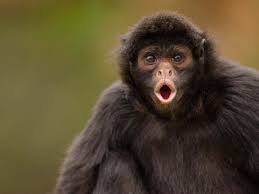Stamp: Red Slender Loris (Loris tardigradus) (Equatorial Guinea 1976)
Red Slender Loris (Loris tardigradus) (Equatorial Guinea 1976)
20 September (Equatorial Guinea ) within release Asian Animals goes into circulation Stamp Red Slender Loris (Loris tardigradus) face value 60 Equatorial Guinean peseta
| Stamp Red Slender Loris (Loris tardigradus) in catalogues | |
|---|---|
| Michel: | Mi: GQ A944 |
Stamp is square format.
Also in the issue Asian Animals:
- Stamp - Polar Fox (Vulpes lagopus) face value 0.30;
- Stamp - Tiger (Panthera tigris) face value 0.35;
- Stamp - Japanes Macaque (Macaca fuscata) face value 0.40;
- Stamp - Red Panda (Ailurus fulgens) face value 0.45;
- Stamp - Snow Leopard (Panthera uncia) face value 0.50;
- Stamp - Giant Panda (Ailuropoda melanoleuca) face value 8;
- Stamp - Red Slender Loris (Loris tardigradus) face value 60;
- Souvenir Sheet - Asian Elephant (Elephas maximus) face value 130;
- Souvenir Sheet - Indian Rhinoceros (Rhinoceros unicornis) face value 200;
- Stamp - Asian Elephant (Elephas maximus) face value 130;
- Stamp - Indian Rhinoceros (Rhinoceros unicornis) face value 200;
- Stamp - Polar Fox (Vulpes lagopus) face value 0.30;
- Stamp - Giant Panda (Ailuropoda melanoleuca) face value 8;
- Stamp - Macaque sp. (Macaca sp.) face value 0.40;
- Stamp - Red Panda (Ailurus fulgens) face value 0.45;
- Stamp - Red Slender Loris (Loris tardigradus) face value 60;
- Stamp - Snow Leopard (Panthera uncia) face value 0.50;
- Stamp - Tiger (Panthera tigris) face value 0.35;
Stamp Red Slender Loris (Loris tardigradus) it reflects the thematic directions:
Animals are multicellular, eukaryotic organisms of the kingdom Animalia (also called Metazoa). All animals are motile, meaning they can move spontaneously and independently, at some point in their lives. Their body plan eventually becomes fixed as they develop, although some undergo a process of metamorphosis later on in their lives. All animals are heterotrophs: they must ingest other organisms or their products for sustenance.
A juvenile is an individual organism (especially an animal) that has not yet reached its adult form, sexual maturity or size. Juveniles can look very different from the adult form, particularly in colour, and may not fill the same niche as the adult form. In many organisms the juvenile has a different name from the adult (see List of animal names).
Mammals are any vertebrates within the class Mammalia (/məˈmeɪli.ə/ from Latin mamma "breast"), a clade of endothermic amniotes distinguished from reptiles (including birds) by the possession of a neocortex (a region of the brain), hair, three middle ear bones and mammary glands. All female mammals nurse their young with milk, secreted from the mammary glands. Mammals include the largest animals on the planet, the great whales. The basic body type is a terrestrial quadruped, but some mammals are adapted for life at sea, in the air, in trees, underground or on two legs. The largest group of mammals, the placentals, have a placenta, which enables the feeding of the fetus during gestation. Mammals range in size from the 30–40 mm (1.2–1.6 in) bumblebee bat to the 30-meter (98 ft) blue whale. With the exception of the five species of monotreme (egg-laying mammals), all modern mammals give birth to live young. Most mammals, including the six most species-rich orders, belong to the placental group. The largest orders are the rodents, bats and Soricomorpha (shrews and allies). The next three biggest orders, depending on the biological classification scheme used, are the Primates (apes and monkeys), the Cetartiodactyla (whales and even-toed ungulates), and the Carnivora (cats, dogs, seals, and allies).
Monkey is a common name that may refer to most mammals of the infraorder Simiiformes, also known as simians. Traditionally, all animals in the group now known as simians are counted as monkeys except the apes. Thus monkeys, in that sense, constitute an incomplete paraphyletic grouping; however, in the broader sense based on cladistics, apes (Hominoidea) are also included, making the terms monkeys and simians synonyms in regard to their scope.




